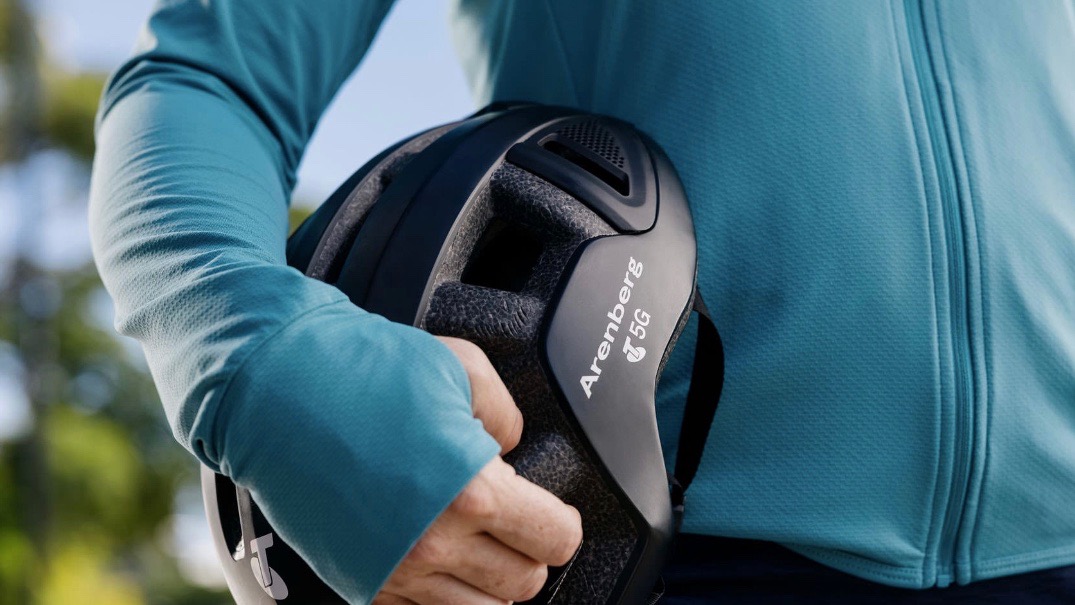5G-enabled helmet prototype helps cyclists see around corners
Telstra brings its 5G technology to a new bike helmet, protecting Australian cyclists.

Around 40 cyclists die on Australian roads each year and with more cyclists on the roads than ever, there’s a risk that number could rise as people take to the pedals for potentially the first time. Australian network, Telstra, are harnessing 5G technology to protect cyclists with a new connected bike helmet, full of safety gear.
Telstra, whose 5G network covers two-thirds of the Aussie population, have been working to connect Australia’s roads to cars for some time, with partnerships in the “Vehicle-to-Everything” (V2X) space dating back years. The network is now looking to tackle the cyclist safety problem, harnessing 5G technology that makes near real-time communication for vehicle safety possible.
“5G isn’t exclusively limited to smartphones, tablets and laptops.”
Gianpaolo Carraro, Telstra.
“5G isn’t exclusively limited to smartphones, tablets and laptops. With the right tech, we can use it to keep riders safe, too by building a connected bike helmet full of safety gear,” said Gianpaolo Carraro, Incubation and Product Excellence Executive, Product & Technology, Telstra, in a statement.
5G-enabled prototype
Partnering with Australian cycling start-up, Arenberg, Telstra has created a connected bike helmet prototype that is 5G-enabled. The helmet prototype features a 5G connection, which passes video, GPS and other data up to a data processing and analytics cloud, as well as Telstra’s V2X program, which gathers data from connected cars on the roads.
The connected bike helmet prototype works by gathering a range of data, and meshing it together with data gleaned from connected cars around the rider, connected infrastructure and nearby road cameras. This information is then fed to a rider through a speaker in the helmet to provide real-time safety information, alerts and warnings.
“Giving them the ability to see around corners.”
Gianpaolo Carraro, Telstra.
“It’s more than just giving cyclists eyes in the back of their head: it’s giving them the ability to see around corners where traffic is at a standstill, and even helps them predict the future,” stated Carraro.
Real-time video via 5G
Road cyclists are particularly in danger if they are “doored” – when a driver or passenger opens their car door into a bike lane, often causing a full-speed collision with the cyclist and sometimes forcing them into the path of another vehicle. With the connected helmet, when a driver or passenger opens their door, real-time video from the bike helmet is sent over 5G and analysed in a cloud platform, where the opening car door hazard is identified. The platform then pushes down an audio alert to the rider to react it time, thanks to the super low-latency connectivity offered by Telstra’s 5G network.
Get up to speed with 5G, and discover the latest deals, news, and insight!
In Melbourne alone, it’s estimated that the popularity of riding soared by 270% following the onset of the pandemic. Sadly, in the months between September and November 2020, one food delivery rider was killed every 11 days in Australia. And whilst many people tend to focus on potential 5G dangers, technology such as this will actually save lives. This is a world-wide problem, too, with more and more people taking to peddle power to tackle city congestion, climate change and general fitness, so we will be expecting to see other 5G networks follow suit and help make roads safer for cyclists.
- Why 5G small cells are vital for mmWave 5G
- Get updates on the hottest 5G stocks
- We reveal the latest 5G use cases
- Discover the truth behind 5G dangers
- 5G towers: everything you need to know
Rachael is a British journalist with 17 years experience in the publishing industry. Since launching www.digitalcameraworld.com, she’s been freelancing, and working for some of the world’s best-loved websites and magazines including T3.com and TechRadar.com and has also had a book, iPad for Photographers, published. A regular contributor at 5Gradar, Rachael is following the 5G market closely. Find out more at www.rachaelsharpe.com

